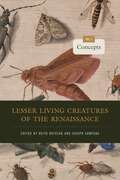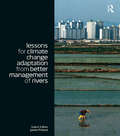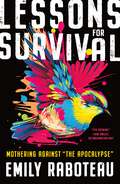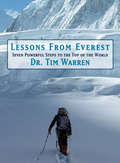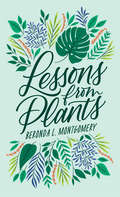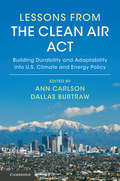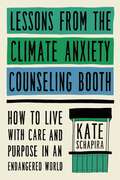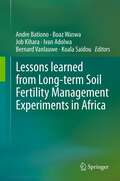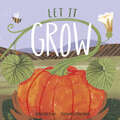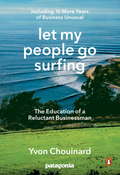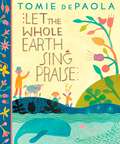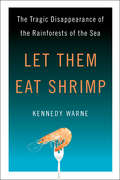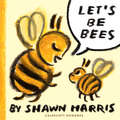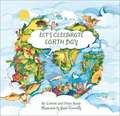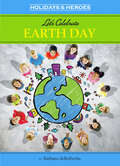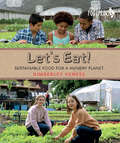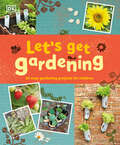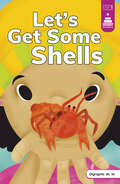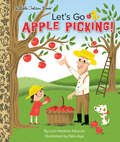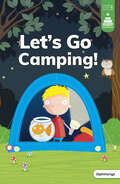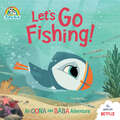- Table View
- List View
Lesser Living Creatures of the Renaissance: Volume 2, Concepts (Animalibus)
by Keith Botelho and Joseph CampanaLesser Living Creatures examines literary and cultural texts from early modern England in order to understand how people in that era thought about—and with—insect and arachnid life. The conversations in this two-volume set address the collaborative, multigenerational research that produced early modern natural history and provide new insights into the old question of what it means to be human in a world populated by beasts large and small.Volume 2, Concepts, explores ideas that cut across species, insect and otherwise, both building on and invigorating critical vocabularies developed over nearly two decades of early modern animal studies. The contributors explore topics such as the medical and culinary consumption of insects; extermination campaigns; the auditory and emotive effects of a swarm; insects and politics; and notions of infestation, stinging, and creeping. Throughout, they illuminate how early modern science and literature worked as intersecting systems of knowledge production about the natural world and show definitively how insect life was, and remains, intimately entangled with human life.In addition to the editors, contributors to this volume include Lucinda Cole, Frances E. Dolan, Lowell Duckert, Andrew Fleck, Rebecca Laroche, Jennifer Munroe, Amy L. Tigner, Jessica Lynn Wolfe, Derek Woods, and Julian Yates.
Lessons for Climate Change Adaptation from Better Management of Rivers (Climate and Development Series)
by Jamie PittockClimate change is dramatically affecting freshwater supplies, particularly in the developing world. The papers in this volume present a powerful case for and exploration of different freshwater adaptation strategies in the face of global climatic change. The volume centres on six detailed case studies, from India, China, Mexico, Brazil, the lower Danube basin and Tanzania, written by experienced local academics and practitioners. They assess autonomous adaptation in the freshwater sector, drawing out key lessons about what motivated these societies to change, which factors led to more successful adaptation, and how interventions may best be sustained. The volume also contains a global overview of the lessons derived from these experiences. It sheds light on two key theories: that vulnerability to climate change is best reduced by reducing poverty and promoting sustainable development first, or by reducing bio-physical risks from climate change. The publication also highlights the need to ensure that access to more precise climate change impact data is not used as an excuse to delay implementation of no regrets adaptation measures.
Lessons for Survival: Mothering Against “the Apocalypse”
by Emily RaboteauAward-winning author and critic Emily Raboteau crafts a powerfully moving meditation on race, climate, environmental justice—and what it takes to find shelter. Lessons for Survival is a probing series of pilgrimages from the perspective of a mother struggling to raise her children to thrive without coming undone in an era of turbulent intersecting crises.With camera in hand, Raboteau goes in search of birds, fluttering in the air or painted on buildings, and city parks where her children may safely play while avoiding pollution, pandemics, and the police. She ventures abroad to learn from Indigenous peoples, and in her own family and community, she discovers the most intimate examples of resilience. Raboteau bears witness to the inner life of Black womanhood, motherhood, the brutalities and possibilities of cities, while celebrating the beauty and fragility of nature. This innovative work of reportage and autobiography stitches together multiple stories of protection, offering a profound sense of hope.
Lessons from Everest: Seven Powerful Steps to the Top of the World
by Dr Tim Warren"Into Thin Air" meets "The Secret" with a splash of humor! After a devastating failed attempt to climb Mt. Everest in 2007 and a brief period of mourning, Dr. Tim Warren became focused on learning the lessons that had been revealed to him while hiking alone for three days down the Khumbu Valley of Nepal to heal his damaged lung tissue in the luxury of oxygen-rich lower altitude. He felt an overpowering desire to return to the mountain the next year and experienced a clear vision of himself at the summit and arriving safely back in base camp. After testing those lessons over the next year-and-a-half, and within an inch of his life, he achieved this goal. Equally importantly, he realized that the lessons learned on the "Big E" were universal to people seeking to overcome difficulties in life or simply to edge a little closer to their full potential. Lessons From Everest describes seven lessons, each a stepping stone to greater understanding and awareness of the reader's inner journey to their own Everest with a healthy dose of seat-of-your-pants adventure.
Lessons from Plants
by Beronda L. MontgomeryAn exploration of how plant behavior and adaptation offer valuable insights for human thriving. We know that plants are important. They maintain the atmosphere by absorbing carbon dioxide and producing oxygen. They nourish other living organisms and supply psychological benefits to humans as well, improving our moods and beautifying the landscape around us. But plants don’t just passively provide. They also take action. Beronda L. Montgomery explores the vigorous, creative lives of organisms often treated as static and predictable. In fact, plants are masters of adaptation. They “know” what or who they are, and they use this knowledge to make a way in the world. Plants experience a kind of sensation that does not require eyes or ears. They distinguish kin, friend, and foe, and they are able to respond to ecological competition despite lacking the capacity of fight-or-flight. Plants are even capable of transformative behaviors that allow them to maximize their chances of survival in a dynamic and sometimes unfriendly environment. Lessons from Plants enters into the depth of botanic experience and shows how we might improve human society by better appreciating not just what plants give us but also how they achieve their own purposes. What would it mean to learn from these organisms, to become more aware of our environments and to adapt to our own worlds by calling on perception and awareness rather than reason? Montgomery’s meditative study puts before us a question with the power to reframe the way we live: What would a plant do?
Lessons from the Clean Air Act: Building Durability and Adaptability into US Climate and Energy Policy
by Dallas Burtraw Ann CarlsonClimate and energy policy needs to be durable and flexible to be successful, but these two concepts often seem to be in opposition. One venerable institution where both ideas are apparent is the Clean Air Act, first passed by the United States Congress in 1963, with amendments in 1970 and 1990. The Act is a living institution that has been hugely successful in improving the environment. It has programs that reach across the entire economy, regulating various sectors and pollutants in different ways. This illuminating book examines these successes - and failures - with the aim to offer lessons for future climate and energy policymaking in the US at the federal and state level. It provides critical information to legislators, regulators, and scholars interested in understanding environmental policymaking.
Lessons from the Climate Anxiety Counseling Booth: How to Live with Care and Purpose in an Endangered World
by Kate SchapiraClimate anxiety is real—and this practical, accessible guide helps address it on personal, relational, and structural levels, from the founder of the Climate Anxiety Counseling Booth. Summer after summer is the hottest on record. People&’s homes are flooding, burning, blowing away. We live with the loss, pain, and grief of what&’s happened, and anxiety for what might happen next, as the systems in which we live are increasingly strained. Lessons from the Climate Anxiety Counseling Booth addresses our collective concerns with empathy, grace, and practical strategies to help us all envision a viable future. By moving through your personal and general climate anxiety, frustration, helplessness and grief, you can move toward a sense of shared purpose and community care. You&’ll find actionable steps for connecting with others, identifying and activating community abundance, matching your skills with organized climate activism, and imagining a radically more livable future in order to bring it into being. Lessons from the Climate Anxiety Counseling Booth meets you where you are, not sugarcoating the realities of this growing crisis, but offering practical strategies for meeting a climate-changed present and future with emotional honesty and communal support. In 2014, when Kate Schapira first set up a Climate Anxiety Counseling booth in her hometown of Providence, Rhode Island, far fewer people were talking about climate change and its attendant anxiety, leaving those who couldn&’t ignore climate change and the forces that cause it feeling frantic and alone. Seeking a way to reach out and connect, Schapira set up a Peanuts-style "The Doctor Is In" booth to talk about climate change with her community. Ten years and over 1200 conversations later, Schapira channels all she&’s learned into an accessible, understandable, and aware guide for processing climate anxiety and connecting with others to carry out real change in your life and in your community.
Lessons learned from Long-term Soil Fertility Management Experiments in Africa
by Bernard Vanlauwe Andre Bationo Boaz Waswa Job Kihara Koala Saidou Ivan AdolwaThis book elucidates the importance of long-term experiments in revealing evidence of soil fertility decline in Africa. An evaluation of experiences from on-going long-term experiments is given in broad detail. The first chapter explains the paradigm shift in soil fertility management then provides justification for long-term experiments before illuminating experiences from long-term experiments in East, West and Southern Africa. The second, sixth, eighth and ninth chapters give an in-depth account of crop management practices and soil fertility interventions in long-term trials within specific agro-ecological zones in West Africa. The rest of the chapters (chapter three, four, five and seven) address crop management, tillage practices and, organic and inorganic fertilizer applications in the context of long-term experiments in specific agro-ecological zones in East Africa.
Let It Grow
by Mary Ann FraserA young boy has a pumpkin seed. A very small pumpkin seed. A very small but special pumpkin seed. And what will become of this very small but special seed? He'll only find out if he lets it grow…and grow…and grow! Because sometimes the smallest things can lead to the biggest adventures! In a world full of immediacy and instant gratification, author Mary Ann Fraser plants the seed of patience in her playful picture book about the life cycle of a giant pumpkin and the rewards of letting it grow.
Let My People Go Surfing: The Education of a Reluctant Businessman--Including 10 More Years of Business Unusual
by Naomi Klein Yvon ChouinardIn his long-awaited memoir, Yvon Chouinard-legendary climber, businessman, environmentalist, and founder of Patagonia, Inc.-shares the persistence and courage that have gone into being head of one of the most respected and environmentally responsible companies on earth. From his youth as the son of a French Canadian blacksmith to the thrilling, ambitious climbing expeditions that inspired his innovative designs for the sport's equipment, Let My People Go Surfing is the story of a man who brought doing good and having grand adventures into the heart of his business life-a book that will deeply affect entrepreneurs and outdoor enthusiasts alike.From the Trade Paperback edition.
Let The Whole Earth Sing Praise
by Tomie dePaolaThis joyous book sings thanks and praise for everything in land, sea, and sky-from the sun and moon to plants and animals to all people, young and old. Beloved author-illustrator Tomie dePaola captures the beauty of God's creation in his folk art-style illustrations. With text inspired by Old Testament Scripture and artwork fashioned after the beautiful embroideries and designs of the Otomi people from the mountain villages around San Pablito, in Puebla, Mexico, this is a wonderful celebration for all to share.
Let Them Be Eaten by Bears: A Fearless Guide to Taking Our Kids into the Great Outdoors
by Peter Brown HoffmeisterGet ready to go out and play... Based on the author’s acclaimed Integrated Outdoor Program, Let Them Be Eaten by Bears is Peter Hoffmeister’s inspiring guide to helping kids enjoy nature and appreciate the great outdoors. Drawing from his personal and professional background as an educator, guide, writer, and father, and focusing on fun rather than fear, Hoffmeister offers an approachable, fun reintroduction to hiking, camping, and all-around exploring that will help parents and kids alike feel empowered and capable. Whether you’re a veteran outdoorsperson, a first-time hiker, or anything in between, get ready to put on your sneakers, turn off your video games, and rediscover the simple, powerful joy of going out to play. .
Let Them Eat Shrimp: The Tragic Disappearance of the Rainforests of the Sea
by Kennedy WarneWhat's the connection between a platter of jumbo shrimp at your local restaurant and murdered fishermen in Honduras, impoverished women in Ecuador, and disastrous hurricanes along America's Gulf coast? Mangroves. Many people have never heard of these salt-water forests, but for those who depend on their riches, mangroves are indispensable. They are natural storm barriers, home to innumerable exotic creatures--from crabeating vipers to man-eating tigers--and provide food and livelihoods to millions of coastal dwellers. Now they are being destroyed to make way for shrimp farming and other coastal development. For those who stand in the way of these industries, the consequences can be deadly. In Let Them Eat Shrimp, Kennedy Warne takes readers into the muddy battle zone that is the mangrove forest. A tangle of snaking roots and twisted trunks, mangroves are often dismissed as foul wastelands. In fact, they are supermarkets of the sea, providing shellfish, crabs, honey, timber, and charcoal to coastal communities from Florida to South America to New Zealand. Generations have built their lives around mangroves and consider these swamps sacred. To shrimp farmers and land developers, mangroves simply represent a good investment. The tidal land on which they stand often has no title, so with a nod and wink from a compliant official, it can be turned from a public resource to a private possession. The forests are bulldozed, their traditional users dispossessed. The true price of shrimp farming and other coastal development has gone largely unheralded in the U.S. media. A longtime journalist, Warne now captures the insatiability of these industries and the magic of the mangroves. His vivid account will make every reader pause before ordering the shrimp.
Let's Be Bees
by Shawn HarrisFather and child become buzzing bees, rustling trees, and more in this delightful make-believe romp from Caldecott Honor winner Shawn Harris.The only thing better than playing make believe is playing make believe with your favorite grown-up! Especially when that grown-up&’s imagination is as big as yours, and you both get to make all kinds of funny sounds. Fans of Shawn Harris&’s Caldecott Honor-winning debut Have You Ever Seen a Flower? and illustrations in the Newbery Medal-winning The Eyes and the Impossible will find a new instant favorite in Let&’s Be Bees. With bright, bold crayon illustrations, lilting, rhythmic words, and endless fodder for playing along, this is a read aloud guaranteed to bring on the giggles and requests to do it all again.
Let's Call Him Lau-wiliwili-humuhumu-nukunuku-nukunuku-âpua'a-'oi'oi
by Tim MyersFrom the book: When a proud triggerfish, swimming "joyfully and boyfully" and a proud butterflyfish, swimming "whirlfully and girlfully," marry and have a fish child, an argument erupts over what to name the child. The happy resolution will appeal to parents and children alike-and speaks particularly to families in which the parents are from different ethnic groups.
Let's Celebrate Earth Day
by Peter Roop Connie RoopA well-rounded introduction to Earth Day for young readers in a question- and-answer format. Important facts about the state of our earth are interspersed throughout, but an overall positive tone leaves readers feeling encouraged, not discouraged. Another great book in the "Let's Celebrate..". series!
Let's Celebrate Earth Day (Holidays & Heros)
by Barbara deRubertisFocusing more on solutions than problems, this book celebrates the Earth heroes who created this important April holiday and explores the ways we can make our planet a safer and healthier place to live.
Let's Eat: Sustainable Food for a Hungry Planet (Orca Footprints #10)
by Kimberley VenessAll the food you eat, whether it's an apple or a steak or a chocolate-coated cricket, has a story. Let's Eat uncovers the secret lives of our groceries, exploring alternative—and sometimes bizarre—farm technology and touring gardens up high on corporate rooftops and down low in military-style bunkers beneath city streets. Packed with interesting and sometimes startling facts on agriculture around the world, Let's Eat reveals everything from the size of the biggest farm in the world to how many pesticides are in a single grape to which insect people prefer to eat.
Let's Find Momo Outdoors!: A Hide-and-Seek Adventure with Momo and Boo (Find Momo #5)
by Andrew KnappExplore the great outdoors with Momo the adorable border collie and his new puppy companion Boo in this bright, friendly board book! In this follow-up to Let&’s Find Momo!, spend a day with Momo as he sets off on a nature adventure. From the mountains to the beach to camping under the stars, young readers will delight in finding Momo in unexpected and beautiful locations. Plus, Momo has an adorable new puppy friend: Boo!In this sturdy board book kids can keep the game going—and learn new words—by searching for objects in each picture. With stunning photographs, bright colors, and Momo&’s friendly face on every page, Let&’s Find Momo Outdoors! delivers exactly what fans loved in the previous Momo books—with plenty of new sights to see and objects to find.
Let's Fly a Kite, Charlie Brown!: A Book About the Seasons
by Charles M. Schulz Harry Coe VerrCharlie Brown and his friends enjoy a variety of activities during the four seasons, from flying a kite in the spring to sledding in the winter. Other books about Charlie Brown and his friends are available in this library.
Let's Get Gardening
by DKIn this colorful guide featuring 30 easy gardening projects, kids will learn to grow their own fruits and vegetables, attract wildlife such as butterflies and bees, and recycle household items into animal habitats and fun decorations. Whether they've got a big backyard or just a windowsill, kids can grow all sorts of plants with this beginner's gardening book.Packed with step-by-step activities, this book teaches children ages 5-8 how to grow garden staples like tomatoes, pumpkins, and zucchini with photographic examples. Each project includes a complete materials list, planting guide, and tips on harvesting your fruits and vegetables, providing plenty of support for kids from start to finish. The book also offers advice on creating creature-friendly spaces within your garden, such as a bee hotel, a ladybug sanctuary, and a home for frogs and toads. By caring for the wildlife around them, kids can grow to better understand the relationship between humans and nature, and how we can support local habitats wherever we happen to live. Beyond the gardening basics, Let's Get Gardening also helps kids learn about conservation, recycling, and sustainability through simple, hands-on projects. From making mini greenhouses out of leftover glass jars, to growing strawberries in an old pair of rain boots, to repurposing an empty milk carton as a hanging bird feeder, there are so many practical ways for kids to help cut waste and reduce pollution. So grab your potting soil and let's get gardening!
Let's Get Some Shells (Stairway Decodables Step 3)
by Leanna KochTrish and Josh are packed and ready for a trip to visit Nan. From swimming to hunting for shells, there are many fun activities to enjoy together. But the best is yet to come when they take home two new pets! Stairway Decodables is a supplemental phonics resource that’s perfect for supporting small group instruction, independent reading, or reading practice at home. This title provides practice in decoding words with consonant digraphs th and/or sh.
Let's Go Apple Picking! (Little Golden Book)
by Lori Haskins HouranThis sweet Little Golden Book tells the story of a young girl and her grandfather picking apples together.A grandfather and his granddaughter have a wonderful time picking apples in this sweet Little Golden Book. From enjoying a bumpy hayride to choosing the very best apples to petting cute farm animals, this is one special day! And it's a perfect book to share with your preschooler before heading out on your own apple-picking adventure!
Let's Go Camping! (Stairway Decodables Step 6)
by Leanna KochPam, Ben, Max, and Sam are off to enjoy a night of camping under the stars. But after Pam tells a scary story, the boys and their pets are too scared to fall asleep. Will they be able to overcome their fear? Stairway Decodables is a supplemental phonics resource that’s perfect for supporting small group instruction, independent reading, or reading practice at home. This title provides practice in decoding words with the dipthongs oy and oi.
Let's Go Fishing! (Puffin Rock)
by Penguin Young Readers LicensesWelcome to Puffin Rock--home to two young puffins, Oona and Baba. Join them on their adventures from the Netflix series, Puffin Rock.It's a windy day on Puffin Rock and Mama has hurt her wing. Papa asks Oona for her help fishing and Oona can hardly contain her excitement. Fishing with Papa will be such an adventure!But fishing on a windy day can be tricky. Will Oona be able to manage it?A beautifully illustrated story based on the award-winning and critically acclaimed animation.
